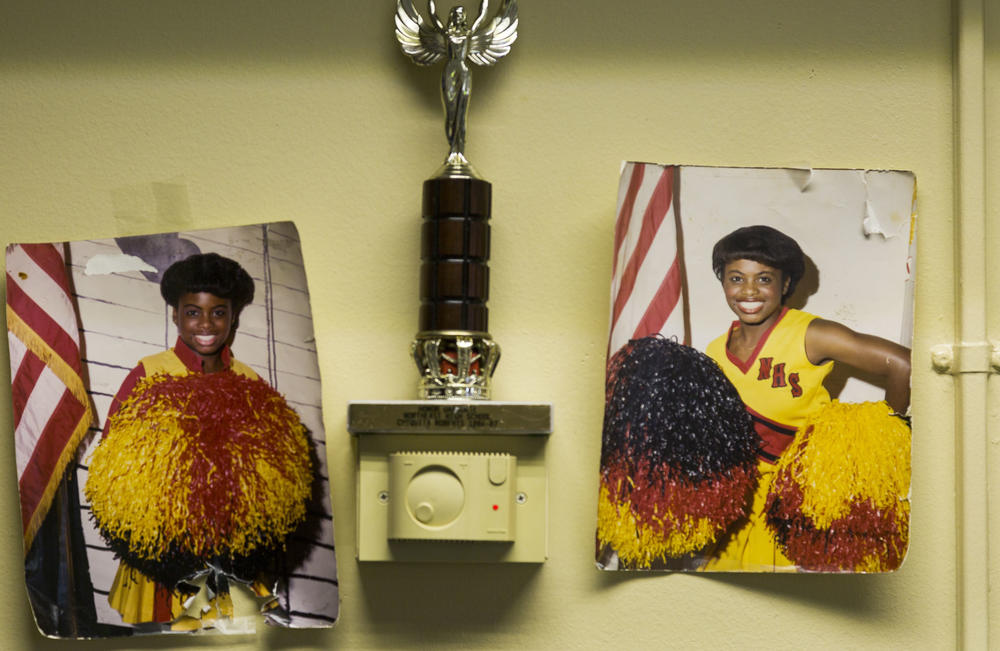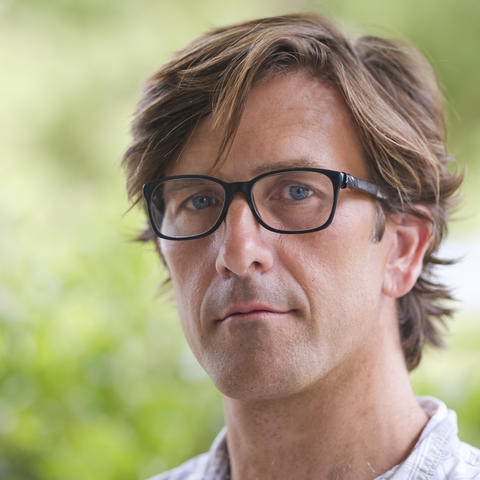Section Branding
Header Content
For Teachers With 'Spark', Look Close To Home
Primary Content
For Teachers With 'Spark', Look Close To Home
Most school days You can find Jared Moore teaching freshman English at Northeast High School in Macon.
On a recent morning, students all faced each other, with their desks arranged in a room filling oval. Before they got to discussing the day’s text, Moore brought the class to attention.
“Ok, Raider Pride,” he said, invoking the school mascot.
“All hands on deck,” the class responded in unison.
The text they were discussing was Robert Kennedy’s eulogy for Martin Luther King, Jr. and how concepts like reputation and trust play out in Kennedy’s words.
This is Moore’s dream job. He’s wanted to do this since he was a student in this very school. Back then Irma Stephens was his favorite teacher. In English, naturally.
“She was really a champion for me,” Moore said of his former teacher. “And I wanted to be able to give some of that back to other students.”
Moore is one of 18 teachers here who once walked the halls of Northeast High School as students. That's almost every teacher here. That’s just one piece of the larger goal to turn around what some outside these red brick walls think of as a less than successful school. There’s been some movement, too. For instance, the graduation rate here jumped from under the Georgia average to well above it in one year. There’s good evidence that teachers from the neighborhood directly affect that graduation rate.
As to how, you need to think about why people whose business it is to recruit educators think about alumni teachers. Joshua Starr, chief executive officer of the non-profit Educators Rising, is such a person. He points out that about 60 percent of teachers in the US work within 20 miles of where they graduated high school. So this isn’t rare, but Starr says in his work it is important.
“One of our programs is to prepare high school kids who want to become teachers,” Starr said. “That's one of the things we talk about is that it’s all about a local pipeline."
Homegrown teachers tend to stay put for one thing. For another, Starr says they have a real sense of community.
“So if there are alum teaching within that school, you'd assume that they have a sense of the context and the history,” Starr said.
Alumni teachers get it because they have literally been there. In this case “there” is a majority black neighborhood in a city where a quarter of white students have left for a suburban charter school. Donna Walker-Thompson taught science for years at Northeast before becoming an instructional coach. She says college is not top of mind for these students.
“Because for a lot of them it's not a very concrete idea,” Walker-Thompson said.
But that’s changing. Walker-Thompson, class of 1990, got a science degree and a job in wastewater management in Atlanta before coming back to teach at Northeast.
“I can talk about you know I actually sat here and took math from a teacher in this room and I went off to get a degree,” she said.
That means when a student hears her say “I became a scientist,” they hear something else.
“Yeah,” Walker-Thompson said. “And you can do it, too."
Latanya Singleton, class of 1992, left a career in radiology to teach in Northeast’s Health Science Magnet program. Her name for Joshua Starr’s “context and history” is her students’ "invisible backpacks."
“It can be anything. Home issues. Food issues.” Singleton said. “Not sleeping because they have to take care of their younger sisters because their parents are working to make ends meet in the household.”
Knowing those things about her students meant she and other teachers knew to take them food when Hurricane Irma kept them away from what was likely their only meal of the day, school lunch.
While it makes intuitive sense that Walker-Thompson’s experience and Singleton’s community knowledge are helpful, you still might be asking what these things actually do. Nick Papageorge, an economist at Johns Hopkins University wanted to know, too.
“What we actually did was to look at about 100,000 black students in North Carolina,” Papageorge said.
These were kids between the third and fifth grades back in the 2000s. Papageorge was looking to see what happened when black students had black teachers in that window of time.
“We found that the impact was large, significant and quite striking,” Papageorge said.
What did he find? When black elementary school students, particularly boys receiving free or reduced lunch, had one black teacher, they were up to 40 percent more likely to later graduate from high school. A dataset from Tennessee schools bore out the same thing. So what’s going on?
“It seems like there is a discrete kind of spark, information that these kids don't have that they need,” Papageorge said.
Jared Moore with one of his Freshman English students at Northeast High School in Macon. Moore graduated from Northeast and has wanted to be a teacher at the school since his school days. "Who better to do this job than me?" he asked. Credit: Grant Blankenship/GPB
So is it as simple as putting black students in front of any black teacher?
"That does not suggest in any way say you can just bring anybody who's not a teacher right now, who doesn't have the training, who doesn't have the experience and just because of the color of their skin they're going to have this huge positive impact," Papageorge said.
It looks like a black student really gets that spark best from a great black teacher.
By now this might sound like an argument for separate but equal schools. Papageorge says no way.
“No not at all,” he said. “What we found is that having one black teacher is really what does the trick."
Having even more black teachers didn’t ramp up the graduation rate. What’s more, the other students who benefited from having a black teacher in the study were upper class white kids.
But there’s still no denying that for majority black schools like Northeast, encouraging this sort of spark by recruiting alumni to teach has a side effect of discouraging classroom diversity. Joshua Starr from Educators Rising says it’s a necessary trade off. He compares pursuing diversity to chasing the schools we want whereas recruiting homegrown teachers is more like making the best out of the schools we have right now.
“I'd take the latter every time,” he said. “And the reason is they are real kids in real classes every day.”
Like the kids in Jared Moore’s freshman English class. Moore is adamant that he wants them to thrive like he did when he was their age. So if the question is who should teach his freshman, Moore counters with a question of his own.
“Who better than me to do that job?”



